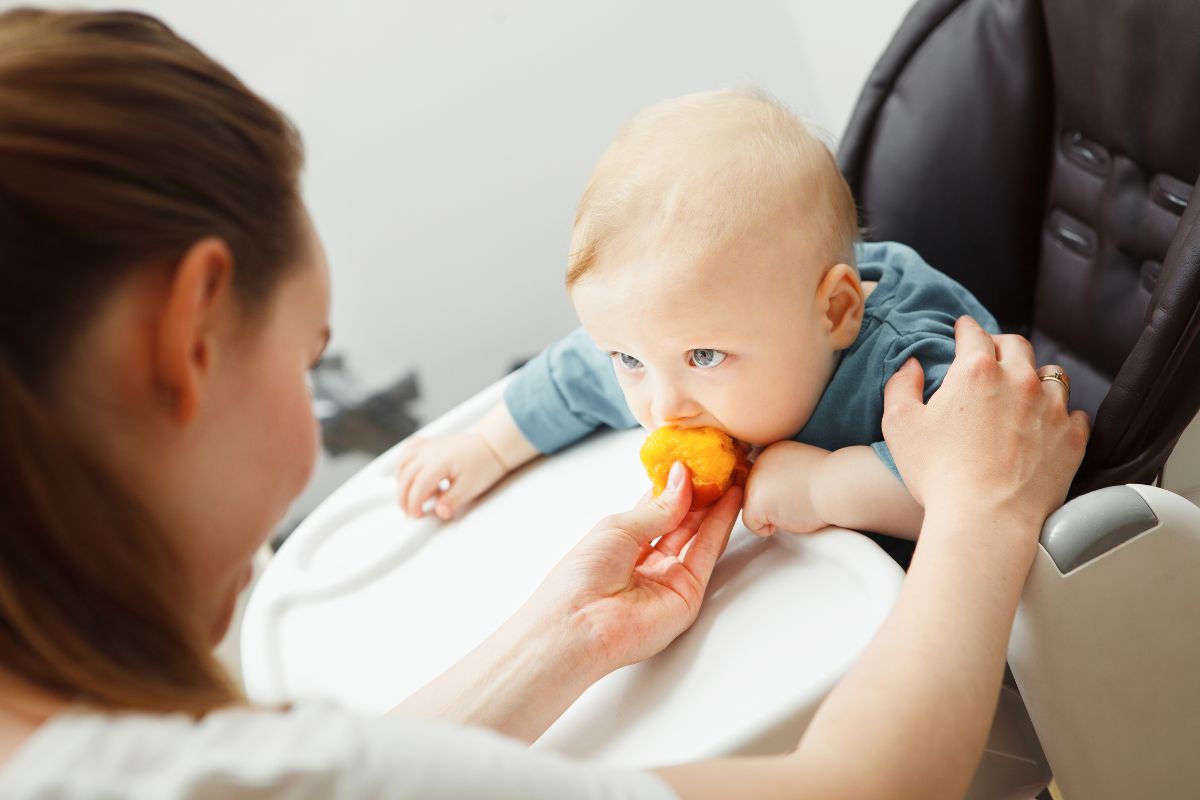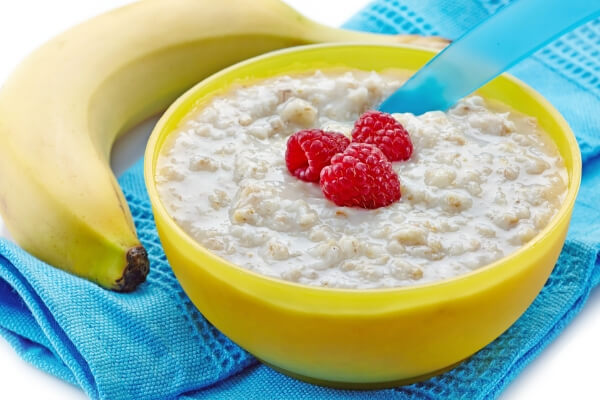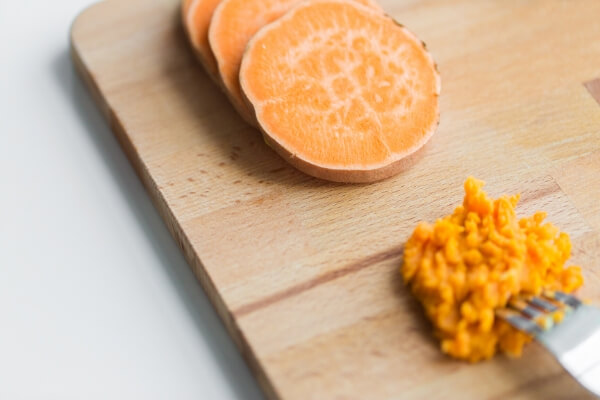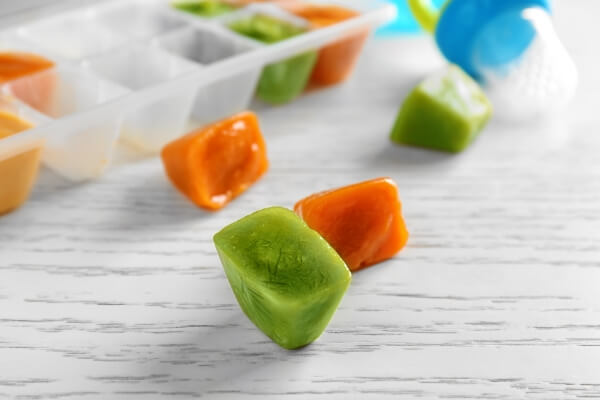Is your baby starting solids? Don’t buy baby food, make it yourself! Here are 9 easy baby foods to make yourself in just seconds with little to no prep work!
When my first son was born the common advice was to start with baby rice cereal, then slowly introduce new kinds of foods one at a time. I bought all those little jars in all those different flavors.
** This website contains affiliate links. If you make a purchase using one of these links, I may earn a commission. Please click here for more information about cookies collected and our privacy policy **.
Eventually, I realized that babies don’t necessarily need “baby food”, they just need food, served in a way that they can eat it.
So even though my firstborn started on baby food jars, we quickly transitioned to table foods and homemade baby food. Except prunes. All 6 of my babies still got prunes from a jar!
Want to make your own baby food, but not sure where to start? Here are 9 super easy baby foods you can make at home, with no extra work.

9 Easy Baby Foods to Make Yourself
The following foods are all great for babies of most any age. And they can all be prepared very easily, usually a fork and bowl is all you need. No fancy equipment or tools needed.
Most of these are so easy to make you will likely just make what you need, when you need it. ie. feed part of the food to the baby and eat the rest yourself! But I have also included storage and freezing directions below if you want to make a larger batch for babies.
Banana
Bananas are a wonderful first food for babies. And they are SO easy to make at home.
All you need is a ripe banana and a fork. Cut a few pieces and mash it with a fork until most of the lumps are gone. Most babies don’t need really, smooth puree, and a few remaining small lumps help them learn to chew and mash with their gums sooner so you can move on to very small chunks of banana instead of mashing.
I am a big believer in starting early when it comes to things like table food and not feeding totally smooth purees, and I think it helps babies transition to solid foods better. Read more on How to Encourage Your Baby to Eat Solid Foods.
Avocado
Avocado has a lot of nutrition and fat, that combined with it’s smooth creamy texture makes it a great first food for babies.
Just slice a few pieces of ripe avocado and mash it with a fork until mostly smooth. Just like with bananas, you can soon transition to serving small chunks instead of mashing once your baby can handle the texture.
Peaches
Peaches are a family favorite in our house- for all ages. And it’s always been a favorite for babies learning to eat solid foods.
To make peach baby food at home quickly, just peel a very ripe peach, take a few slices and mash with a fork until very smooth.
If the peach is ripe, you won’t have to worry about being too hard, just be sure to get all the skin out since skin can be a choking hazard.
You can also use frozen peaches, just defrost first.

Sometimes you can just feed the baby without any prep at all!
Pears
Like peaches, pears are a favorite new food for babies.
To make your own, peel a ripe, soft pear and cut a few slices. Mash with a fork until smooth.
Again, be sure to get the skin off since it can cause choking. I recommend using Bartlett pears since they tend to be softer.
Oatmeal
In my opinion, rice baby cereal is worthless. Just empty calories. But if I do choose to feed grains and cereals to my babies, I use oatmeal.
I use quick cooking oats since they are smaller than rolled oats and cook up somewhat mushier.
I use the same oats I would use for my older kids. I do often mix in some juice or other mashed fruits (like peaches, pears, applesauce, or bananas) for added flavor.

Kiwi
Kiwi is an easy food to make for babies at home. While it’s not highly allergenic, kiwi is acidic so it’s usually recommended to wait until about 8 months to introduce kiwi. Though, if your baby doesn’t have digestive issues or sensitivities, it’s find to try it earlier- around 6 months.
Again you will need a soft, ripe kiwi. Remove the peel and cut off the ends (they can sometimes be hard). Mash the kiwi with a fork until smooth.
The seeds are very small and shouldn’t need to be removed.
Strawberries
While strawberries are considered a somewhat allergenic food, for those with no family history of allergies can introduce it the same as other foods.
Small pieces of soft strawberries are a great finger food for older babies, but they can also be mashed to feed to younger babies as well.
Again, just wash and cut the top off of your ripe strawberries and mash with a fork.

Sweet Potato
Sweet potato is very healthy and full of nutrition, making it a great first food for babies. It’s also super easy to make at home.
Just bake or boil a sweet potato until soft. Remove the skin and mash with a fork. This is an easy baby food to make yourself when you are serving sweet potatoes for the whole family!
Depending on how dry your sweet potato is, you may need to add a little water or breast milk/formula to thin it.
Squash/Pumpkin
Squash is a staple in our garden, and we love to grow sweet varieties that the kids will eat just like they would a sweet potato.
Preparing squash for babies is the same as preparing squash for the whole family.
To make your own, roast a squash until very soft all the way through. Remove the skin and seeds. Mash with a potato masher, blender, or food mill.
Tools and Supplies for Making Your Own Baby Food
As you can see, most baby foods can be made simply by mashing with a fork. There’s really no need to get out the blender or food processor.
But if you want to make different foods, that are harder to mash with just a fork, here are some options:
- Blender (like a Vitamix)
- A Baby Food Mill (I used one for my first and it was very helpful for thicker items)
- Food Processor
These tools are also helpful if you want to make a larger batch to freeze for later.
You can also use a pulp feeder to feed these foods as is.

How to Store Homemade Baby Food
Most of these foods are easy to make and serve right then. And then consume the rest of the food yourself.
For example, a 6 month old may only eat 2 slices of a peach. So mash 2 slices and eat the rest yourself.
But if you want to make a larger batch to save for later, you have a couple of options for storing homemade baby foods:
- In the fridge. Most foods will keep at least a couple of days to a week in the fridge. Some foods such as peaches and banana can get discolored in the fridge, but they are still edible. Just store in an air tight container for up to a week.
- Freeze. Freezing homemade baby food is the best way to keep it for a longer period of time.
How to Freeze Homemade Baby Food
Homemade baby food is easy to freeze. It’s as simple as sticking it in the freezer.
But since babies don’t eat huge portions, the best way to freeze baby food is in ice cube trays. That makes it easy to take out a small amount at a time.
Simply fill an ice cube tray with your mashed fruits or veggies and cover with foil or plastic wrap. Stick in the freezer until completely frozen.
Then pop the cubes out of the tray and place in a freezer bag to store. Don’t forget to label the bags with the contents and the date! Remove as much air as you can from the bag to prevent freezer burn.
To use, take a few cubes out of the freezer and place in a bowl in the fridge or in a bowl placed in a hot water bath to thaw. I don’t recommend using a microwave for baby food.
More Tips for Raising Babies
How to Soothe a Crying Baby- 9 Tips to Calm Them Now
Quick and Easy Sensory Activities for Babies to Explore
How to Get Your Newborn to Sleep- Tips from a Mom of 6
9 Stimulating Sensory Bags for Babies (and Big Kids too!)


